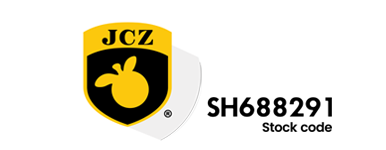As the world increasingly turns to additive manufacturing for innovative solutions, 3D printing has carved out a vital niche in both industrial applications and consumer markets. Utilizing advanced technology to create three-dimensional objects from digital models, this method of production can significantly reduce waste and streamline manufacturing processes. While numerous 3D printing software options exist, Linux-based solutions are rapidly gaining traction among enthusiasts, makers, and professionals. In this article, we delve into the world of 3D printing software for Linux, exploring its advantages, key software options, and future prospects.
The Rise of 3D Printing Software on Linux
Linux has long been favored for its open-source nature, offering customization, security, and flexibility. As the maker movement grows and professionals seek robust alternatives to proprietary software, Linux environments provide an essential platform for 3D printing. The ability to adapt and modify the software according to specific needs makes Linux an appealing choice, while also supporting a collaborative atmosphere among developers.
Advantages of Using Linux for 3D Printing
1. **Open-Source Accessibility**: A key characteristic of Linux is its open-source nature. Many Linux applications for 3D printing are free to use, providing cost-effective solutions for both hobbyists and entrepreneurs. Users can access the source code, enabling them to modify and enhance the software according to their requirements. This encourages innovation and community collaboration.
2. **Customizability**: As a highly customizable operating system, Linux allows users to tailor their environments to optimize performance for specific 3D printing tasks. Whether it’s selecting a lightweight desktop environment or configuring system settings for a dedicated 3D printing workflow, Linux users have the flexibility to create the ideal setup.
3. **Stability and Efficiency**: Linux is known for its stability and resource efficiency compared to other operating systems. These features are vital for 3D printing projects that demand prolonged computing power and reliability, especially when working on large or complex models. Users can run powerful slicing software or CAD programs without compromising system performance.
4. **Strong Community Support**: The vast Linux community is a wealth of knowledge and resources. Users can easily access forums, tutorials, and documentation, making it easier to troubleshoot issues or seek advice. This support network can be invaluable, particularly for newcomers entering the realm of 3D printing.
Popular 3D Printing Software Options for Linux
A plethora of software solutions are available for users operating on Linux. Here are some of the most notable:
1. **Cura**: Developed by Ultimaker, Cura is widely regarded as one of the best slicing software options available. It offers a comprehensive suite of features, including customizable settings, a user-friendly interface, and support for a wide range of 3D printers. As a reliable slicing tool, it allows users to convert 3D models into printable files efficiently.
2. **FreeCAD**: For those looking to design their 3D models directly, FreeCAD is a powerful, open-source parametric 3D CAD application. Equipped with a modular architecture, it is adept for a variety of design tasks, including architecture, mechanical engineering, and product design. Its compatibility with various file formats enables seamless integration into 3D printing workflows.
3. **PrusaSlicer**: Tailored for use with Prusa 3D printers, PrusaSlicer is a standalone slicing application that has gained popularity across the community. It is compatible with various printer brands and provides advanced features such as multi-material printing and support material generation.
4. **Blender**: While primarily known as a 3D modeling and animation software, Blender has powerful modeling capabilities that can be utilized for 3D printing. With an extensive range of tools and a strong community, it can provide complex modeling solutions, making it a favorite among artisans and designers.
5. **OctoPrint**: For those interested in monitoring their 3D prints remotely, OctoPrint is an excellent web-based interface. It allows users to control and monitor their printer from any device on the network, providing necessary oversight during the printing process and enhancing the overall experience.
Conclusion
As 3D printing becomes an integral part of various industries and daily life, Linux-based software solutions offer unique opportunities for makers and professionals. With their robustness, customizability, and strong community support, these platforms are well-positioned to meet the needs of modern fabrication. As technology continues to evolve, it is clear that Linux will play a crucial role in the future of 3D printing, enabling a new generation of innovators to push the boundaries of what is possible in manufacturing and design. Whether you are a hobbyist looking to dive into the world of 3D printing or a professional seeking a versatile production solution, Linux offers an array of software options that can meet your needs and elevate your projects to new heights.
由投用户稿件整理稿件发布,不代表本站观点及观点,更多交流学习之用,如涉及版权等问题,请随时联系我们(yangmei@bjjcz.com),我们将在第一时间给予处理。


![[20w fiber laser marking machine]Exploring the Amazing Capabilities and Applications of a 20W Fiber Laser Marking Machine in Modern Manufacturing and Crafting](https://www.ezcadchina.com/wp-content/uploads/2024/06/Enhanced-Metal-Fiber-Laser-Cutting-Using-MCS-F-Series-Laser-Cutting-Controllers_1-500x383.jpg)
![[engraving software free download]Discover Amazing Engraving Software Free Download Options: A Comprehensive Guide to Choose the Right Tool for Your Creative Projects](https://www.ezcadchina.com/wp-content/uploads/2024/05/Application-of-large-size-intelligent-continuous-laser-processing-system-500x383.jpg)
![[lmcv4 fiber]Exploring the Innovative Applications and Benefits of LMCV4 Fiber in Advanced Textile Engineering and Sustainable Fashion Industry](https://www.ezcadchina.com/wp-content/uploads/2024/07/Is-Mopa-laser-better-than-fiber-laser-500x383.jpg)
